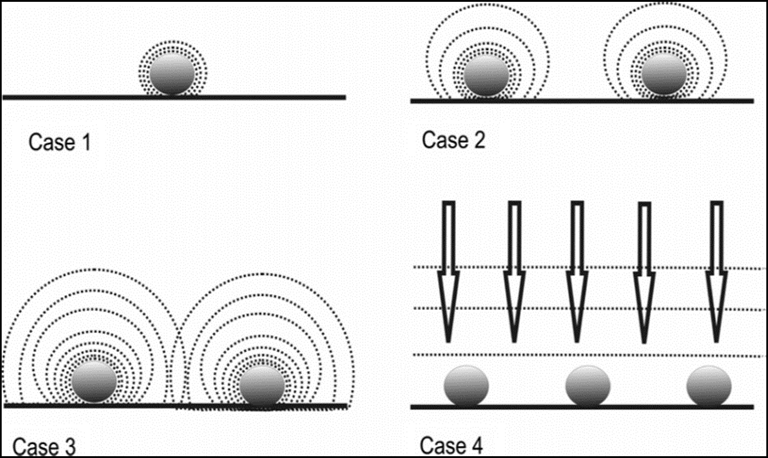NANOMATERIAL ASSISTED VOLTAMMETRIC ANALYSIS OF TRACE ELEMENTS
DOI:
https://doi.org/10.71146/kjmr660Keywords:
Silver nanoparticles, Halide ion detection, Cyclic voltammetry, Modified glassy carbon electrode, Electroanalytical sensorAbstract
Using cyclic voltammetry, selected above linear sweep voltammetry for their steady response, this work analyzes silver nanoparticles (AgNPs) as an electroanalytical platform for trace detection of halide ions (Cl⁻, Br⁻, I⁻). On glassy carbon (GCE) and platinum electrodes, spherical 10 nm AgNPs were deposited; GCE displayed enhanced signal amplification. Reactions of AgNPs with halides at different scan speeds verified diffusion-oriented mechanisms in 0.2 M sodium nitrate electrolyte. At low AgNPs surface coverage (Qp = 2.4), negative potential shifts and nonlinearity between halide concentration and oxidation peak heights for silver halides were shown. Higher coverage (Qp = 9.64) produced optimal linearity (R² = 0.997–0.999) and stable peak potentials, suggesting a change from convergent to linear diffusion dynamics. About detection limits of 0.034, 0.018, and 0.015 mM, respectively, detection ranges encompassed 0.25–5.0 mM (Cl⁻), 0.1–5.0 mM (Br⁻), and 0.03–5.0 mM (I⁻). At high doses, significant interference from thiocyanate and sulfite was seen. Consistent with accepted techniques, the AgNPs/GCE sensor effectively measured chloride in bottled water and bovine serum and attained outstanding recovery for iodide-spiked tap water. The platform shows strong halide sensing with broad linearity, selectivity, and repeatability, underlining its possible uses in environmental and biological contexts.
Downloads

Downloads
Published
License
Copyright (c) 2025 Arooj Fatima, Waqar Ahmad, Umair Khatab, Murtaza Shafi, Sana Saeed, Shah Wali Ullah (Author)

This work is licensed under a Creative Commons Attribution 4.0 International License.






